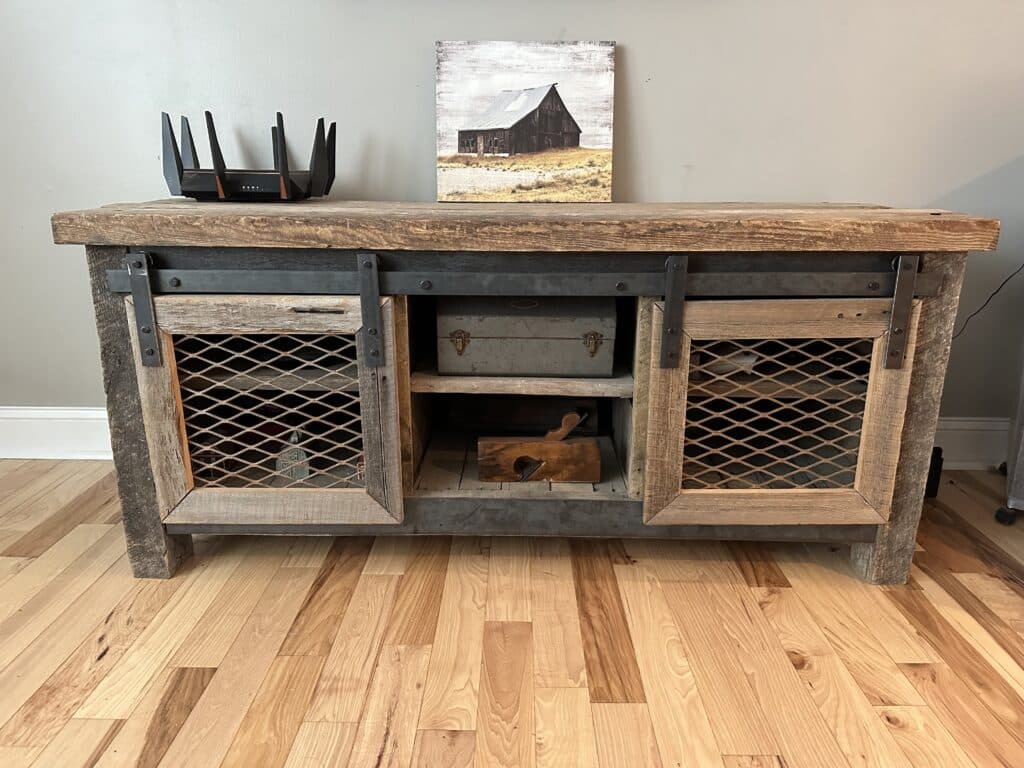
In the world of interior design the allure of reclaimed wood has grown exponentially, as homeowners and designers seek sustainable and unique materials for their décor projects. Salvaging and restoring wood has become an art form, allowing us to breathe new life into weathered pieces that carry the stories of the past. In this post, we'll delve into the art of salvaging reclaimed wood and explore how it can be expertly restored for stunning décor projects that infuse both character and sustainability.
Unearthing the Hidden Treasures:
The process of salvaging reclaimed wood begins with a treasure hunt. Old barns, historic homes, and even an old WW2 Army post can yield hidden gems waiting to be reclaimed. The hunt for aged and weathered wood not only ensures eco-friendly sourcing but also unveils pieces with a rich history that will bring a unique appeal to any project.
Assessing and Preparing the Wood:
Once reclaimed, the wood undergoes a meticulous assessment to determine its usability. Experts look for structural integrity, signs of damage, and the presence of any contaminants like nails or screws. The preparation process involves cleaning, removing old finishes, and sometimes cutting the wood into manageable pieces to be used in various projects, such as tables, accent walls, or even unique decorative art pieces.
Embracing Imperfections:
The true beauty of reclaimed wood lies in its imperfections. Knots, nail holes, and weathering give each piece its distinct charm and personality. Rather than viewing these imperfections as flaws, the art of restoration lies in celebrating and enhancing them. Sanding and refinishing are done strategically to retain the wood's unique character while ensuring a smooth and safe surface for use in different décor projects.

Reclaimed wood serving tray
Tailoring to Your Vision:
The versatility of this type of wood allows it to be customized to fit various décor projects and styles. Whether you prefer a rustic farmhouse look or a modern industrial design, reclaimed wood can be adapted to suit your vision. Professional artisans skillfully shape the wood to create furniture, wall paneling, shelving, and more, breathing new life into discarded materials.
Sustainable Décor with Timeless Appeal:
By salvaging and restoring reclaimed wood, you contribute to sustainable living by reducing the demand for newly sourced timber. Each of these restored pieces carry a unique narrative, connecting your projects to the past while embracing eco-conscious choices for the future. Moreover, the inherent durability of reclaimed wood ensures that your décor projects will withstand the test of time, becoming cherished heirlooms that transcend fleeting trends.
Conclusion:
The art of salvaging and restoring reclaimed wood is a beautiful marriage of sustainability, creativity, and history. As we breathe new life into aged wood, we create projects that transcend aesthetics and carry a unique character that tells a story of the past. From reclaimed tables to captivating accent walls, incorporating these pieces into your space brings an undeniable charm that will elevate your home into an artful sanctuary. Venture into the world of reclaimed wood, and let your décor projects tell tales of craftsmanship, preservation, and timeless appeal!

Kitchen range hood made from reclaimed barn wood
Where can I find reclaimed wood for my décor projects?
This kind of wood can be found at various places, including salvage yards, architectural salvage stores, and even online marketplaces. Additionally, networking with local demolition or construction companies may lead to potential sources for reclaimed wood and other reclaimed materials.
How do I know if this type of wood is suitable for my décor projects?
Assessing the suitability of reclaimed wood involves examining its condition, structural integrity, and potential contaminants. Look for signs of damage, rot, or insect infestations. Consulting with a professional or experienced artisan can help you determine if the wood is appropriate for your project.
What are some popular décor projects using reclaimed wood?
Reclaimed wood offers endless possibilities for décor projects. Some popular options include creating rustic accent walls, reclaimed furniture such as coffee tables or bookshelves, wall-mounted shelves or picture frames, and even unique artwork and sculptures.

How do I ensure the safety of reclaimed wood in my home?
Safety is essential when working with reclaimed wood. Ensure that the wood is free from harmful contaminants like lead paint or chemicals. Properly clean and sand the wood to remove any potential hazards. If using reclaimed or repurposed wood for functional furniture such as tables or chairs, have it inspected and reinforced if needed by a professional to guarantee stability and sturdiness.
Are there any specific tips for DIY restoration of reclaimed wood?
If you're considering restoring reclaimed wood yourself, remember to wear appropriate protective gear, such as a dust mask and safety goggles. Use non-toxic cleaning agents and consider eco-friendly finishes or sealants to maintain the wood's natural charm while safeguarding it for long-term use. Engaging in online tutorials or seeking advice from experienced woodworkers can also provide valuable insights for successful DIY restoration projects.

Written by Jake Park
Jake is the founder of Modern Timber Craft and is a seasoned reclaimed woodworking enthusiast with over 20 years experience.


